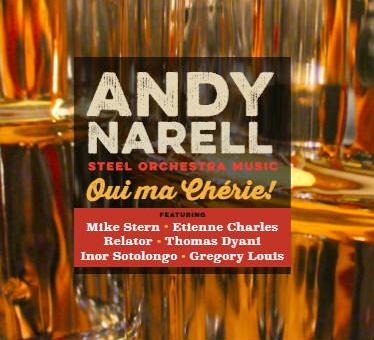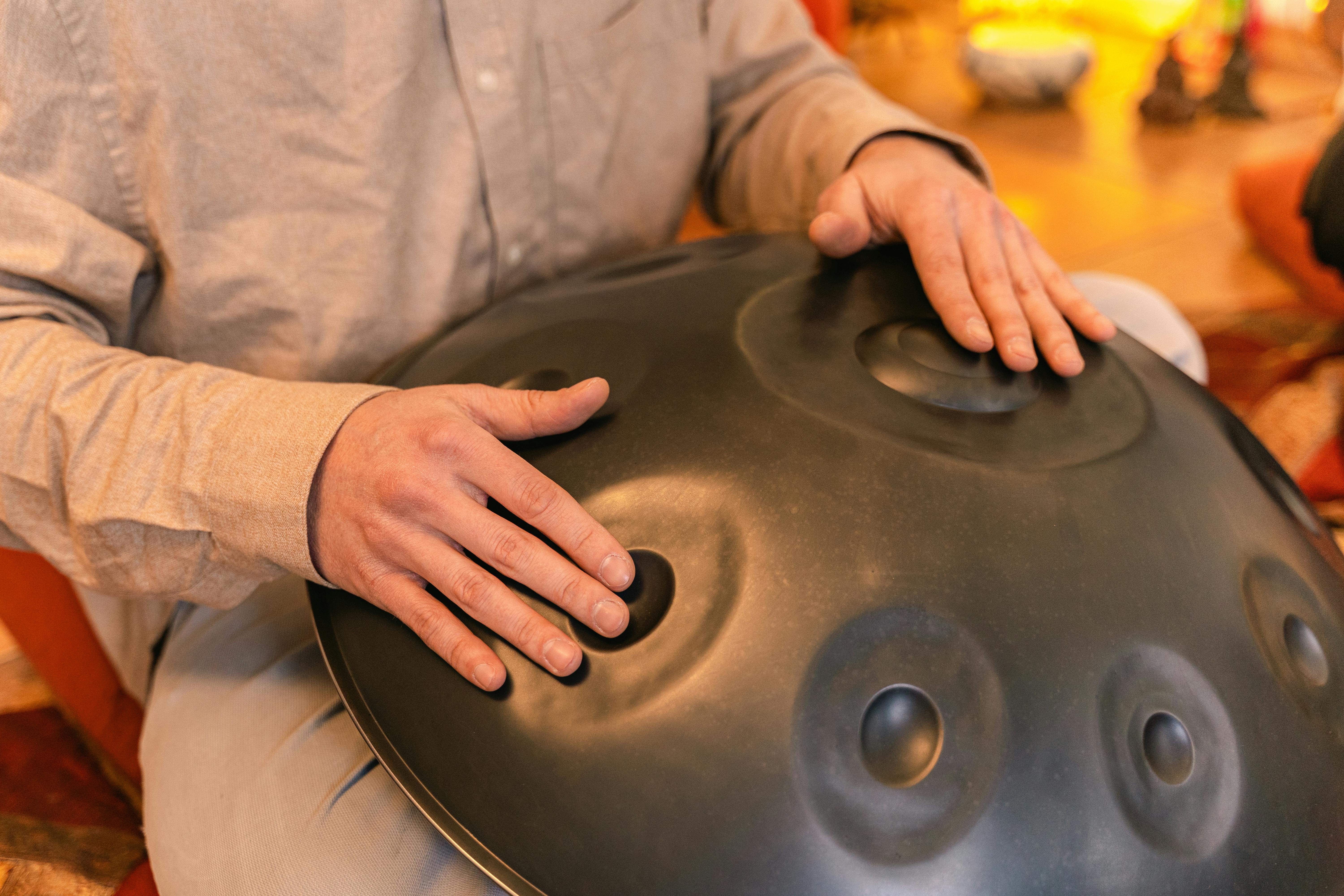Written by Ted Goslin
From its opening track, Forward Home, it’s made clear that Andy Narell’s latest album, Oui ma Cherie! is all about establishing a mood. The album delivers on every level with each track expanding on that mood in a different direction with a rich, colorful pallet of sound that showcases the pannist’s versatility and longing to push the boundaries of traditional Steelpan music.
Given the depth of sound Narell was able to capture with the instrumentation of 25 sets of Steelpans, many of them tuned by the master himself Ellie Manette, and all played by Narell, it makes sense that it took several years to complete the album (two years just for Visibly Absent). The album is his first full steel orchestra work since 2007’s Tatoom, and features his two longest tracks to date. Visibly Absent is a beautiful blending of Middle-eastern and North African styles that captures a darker feel than most Narell fans might be used to, clocking in at 20 minutes, 51 seconds and worth every second. The track is an expression of the emotional spectrum one would expect to hear in a format like Panorama, but on a grander scale and more reminiscent of romantic period classical composers like Hector Berlioz or Antonin Dvorak than traditional Pan composers.
The second-longest track, One More Touch, features just as much versatility as Visibly Absent, but with a more upbeat sound, sentimental melodies, and a variety of solos by Etienne Charles (presenting a tonally triumphant trumpet) and Mike Stern (with his articulate expression of bebop infusion and compositional compatibility). The track fades on Stern’s solo, making its way into oblivion, while remaining continuous.
The concept of the fade can be known in some albums to come off lazy or deceptive, but that is clearly not the case here given the creative way in which Narell produces his soloists to give fitting solos that match both the timbre of the music and provide insight to those artists’ individual styles.
The album’s special guests don’t stop in the instrumental soloist realm, as Calypsonian vocalist, Relator, makes his presence known on the modernized throwback Calypso track, Lenore’s Well, a Lord Kitchener classic. Etienne Charles also adds to the track with some tasty jazz licks to enhance to island vibe. Not only is the track perfectly executed but also well placed as it is the third of five, coming right after Visibly Absent, the longest cut on the album, helping to break up the weight of the larger tracks.
It’s also important while mentioning guest artists to give credit to the stellar work of drummer Gregory Louis and conga player Inor Sotolongo, who are able to find the balance between creating a strong engine room while not overpowering the subtle nuances of the Pans, which can be overwhelmed quite easily by percussion. Thomas Dyani adds a deft hand or two on the Djembe with his speedy and aggressive solos on Forward Home, a cover of the Andre Tanker original.
Although there are various recordings available of The Last Word, the version presented here is easily his best. One reason is the inclusion of a solo within the first variation, as if to set it apart from the Panorama version that was performed at the 2013 Trinidad & Tobago Panorama competition.
The fact that this version is slightly longer and more exploratory than the Panorama version also might imply that Narell didn’t want to be hindered by the controversy surrounding his piece when it failed to make the finals of the competition, arguably due to the judges not understanding it or seeing it as a traditional Panorama piece. The humor in this version can then be found in the title of the album (Oui ma Cherie!), being that it’s the subtitle of The Last Word and ironically what many could use to sarcastically say to the nay-sayers of the piece (yes, darling).
The track also sounds worlds better than other recordings, due to both the time put into making it (Narell tracked all parts himself, one at a time) and the sound quality achieved from the recording equipment and quality of the instruments.
“All the Pans on this album were recorded with vintage Neumann tube microphones, high quality preamps and digital converters. It was recorded in Protools but I mixed it on an SSL console with a world class engineer (Philippe Avril) in Paris who’s done a few of my albums already and understands what I’m trying to do with the Pans,” Narell said. “I’ve learned a lot over the years about recording and am trying to make each record sound better than the last.”
Anyone who has ever played an instrument knows what it takes to be not only good, but great.
To explore the instrument in subtle ways and find things others couldn’t takes time, patience and strong mental fortitude. These are all traits that are presented in a masterclass format. That’s not to say that the average listener would have the patience to sit and listen to the longer pieces on the album, but I would bet money that if given the chance, this album could sway more people to the long-form style of record making.
“This is my third full album of steel orchestra music with soloists (The Passage, Tatoom) and I did steel orchestra pieces on Little Secrets and Down the Road. You can expect to see more of this type of album because I love doing steel band music and feel that I’ve only scratched the surface of the musical possibilities,” Narell said. “My goal with this album was to create the best album I’m capable of, and for it to be a step forward from my previous work.”
Mr. Narell, I think you may have succeeded.
Andy Narell’s Forward Home music video, filmed with the Laborie Steel Band in Laborie, St. Lucia.








